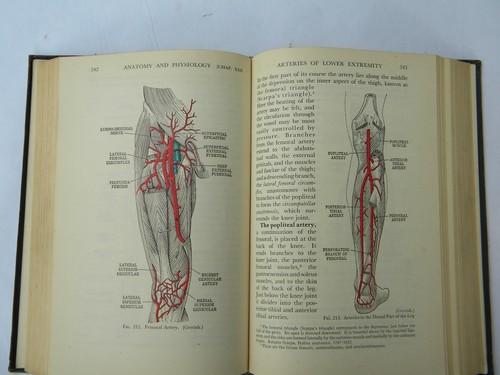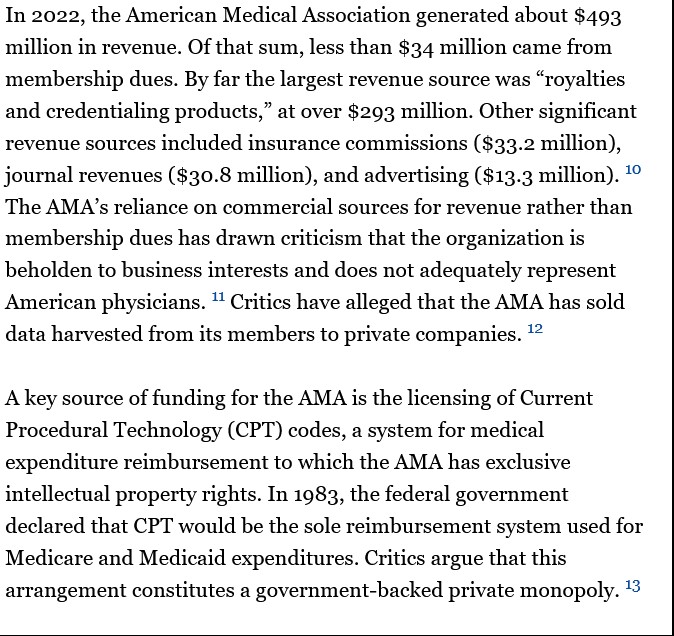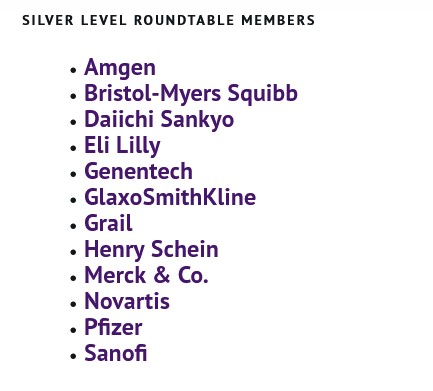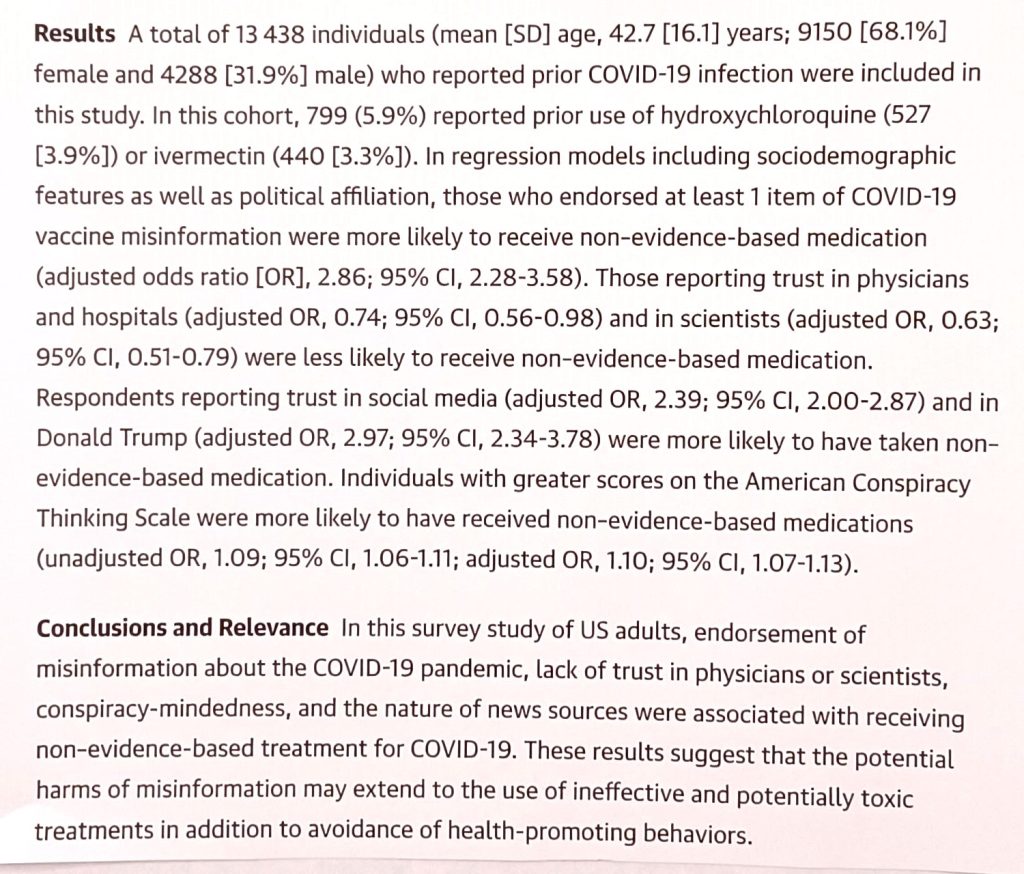
The above free vintage image of the United States Bill of Rights is courtesy of Ebay and Google Images.
Health Friday is a series on Big Pharma, vaccines, general health, and associated topics.
There are Important Notifications from our host, Wolf Moon; the Rules of our late, good Wheatie; and, certain caveats from Yours Truly, of which readers should be aware. They are linked here. Note: Yours Truly has checked today’s offering for any AI-generated content. To the best of her knowledge and belief, there is none. If readers wish to post any AI-content to the discussion thread of today’s offering, they must cite their source. Thank you.
The Second Amendment of the Bill of Rights of the Constitution of the United States of America:

The above image of the language of the Second Amendment is courtesy of Fine Art American and Google Images.
The Second Amendment was ratified on 15 December 1791. Since that date, there have been numerous attempts to “revise”, to “clarify”, to hobble, to limit, and even to erase, the Second Amendment. There are now hundreds of “gun laws” on the books. There is an entire agency of the federal government, the National Instant Criminal Background Check System (NICS) that prospective firearms owners must submit to, and clear, before a firearm can be purchased.
The American Medical Association (the AMA), the largest and most influential physicians’ professional organization in the United States, has, for some years, been involved in initiatives and activities related to treating firearms ownership as a “health issue.” In Yours Truly’s opinion, the AMA appears to be getting more aggressive in these initiatives and activities.
The focus of today’s post is on two items: One, a recent CME (Continuing Medical Education) course offering by the AMA; and, Two, a 2016 article that includes, as an author, one of the physicians who is involved with the CME course offering.
Yours Truly begins with the CME course offering, found online here: https://edhub.ama-assn.org/science-medicine-public-health/video-player/18910731, “Health Care Strategies for Firearm Injury Prevention”, 11 September 2024. There is a video embedded for the CME course; there is also a “Read Transcript” link. Yours Truly believes that reading the Transcript is the better way to glean the course content.
In summary: One: it appears that the AMA officially termed firearms violence as a “public health crisis.” Two: it appears that the AMA is calling for “universal screening” of all patients by physicians for firearms ownership, for potential health and/or psychological issues that would limit or even remove such ownership. Such “universal screening” would occur as part of the “routine questions” that the physician asks the patient during an exam (for example: “Do you smoke?”; “Do you own a firearm?” would be added.) Three: it appears that the AMA endorses “lethal means counseling” for those patients who “fit” criteria under point Two, above. Screenshots that are relevant to these points, taken from the CME course Transcript, from physician panelists involved in the CME, are below. The first screenshot is from a statement by Dr. Willie Underwood, MD; the second screenshot is from a statement by Dr. Chethan Sathya, MD; and, the third and fourth screenshots are from a statement by Dr. Katherine Hoops, MD:
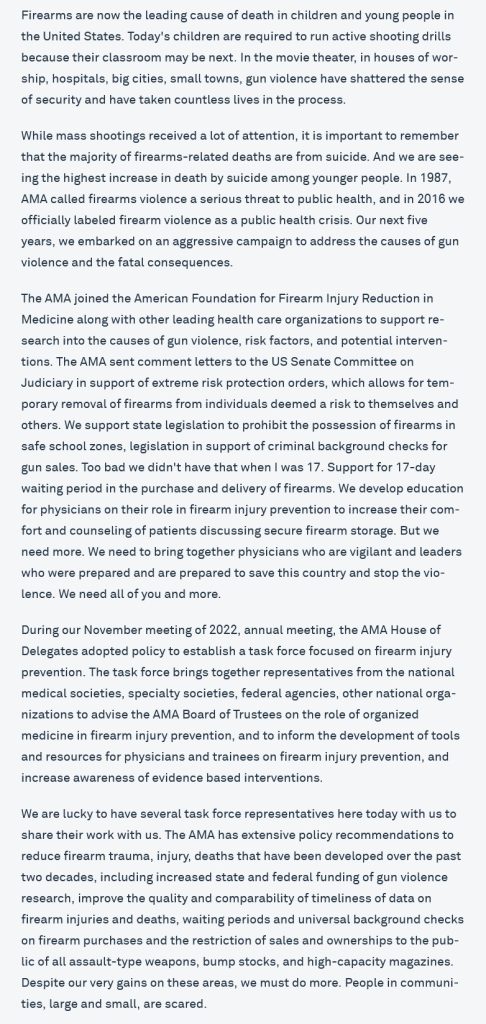
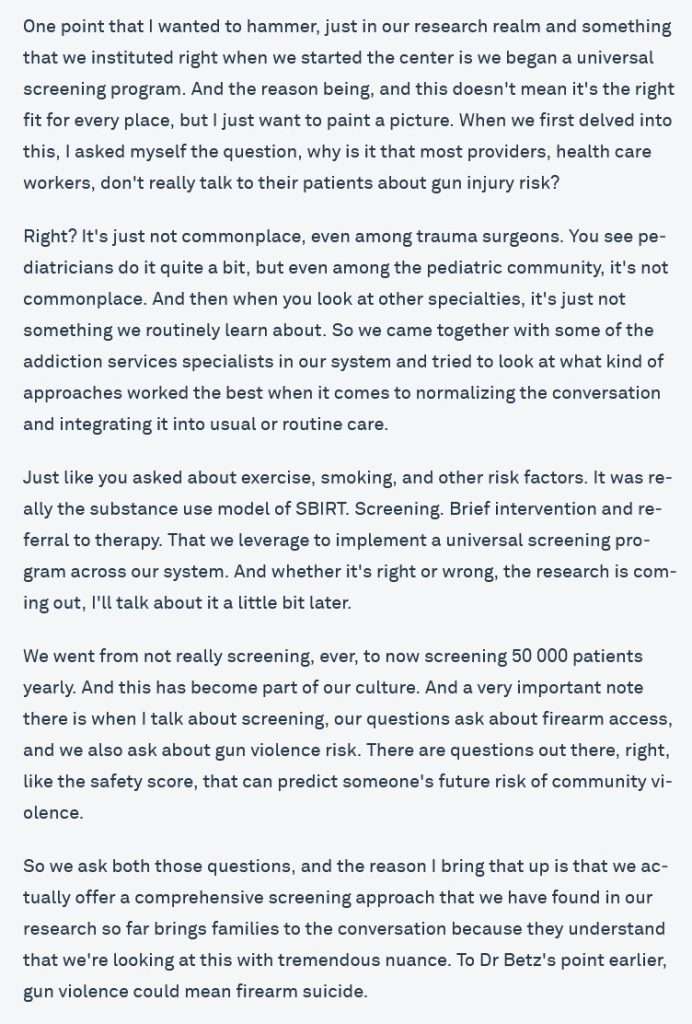
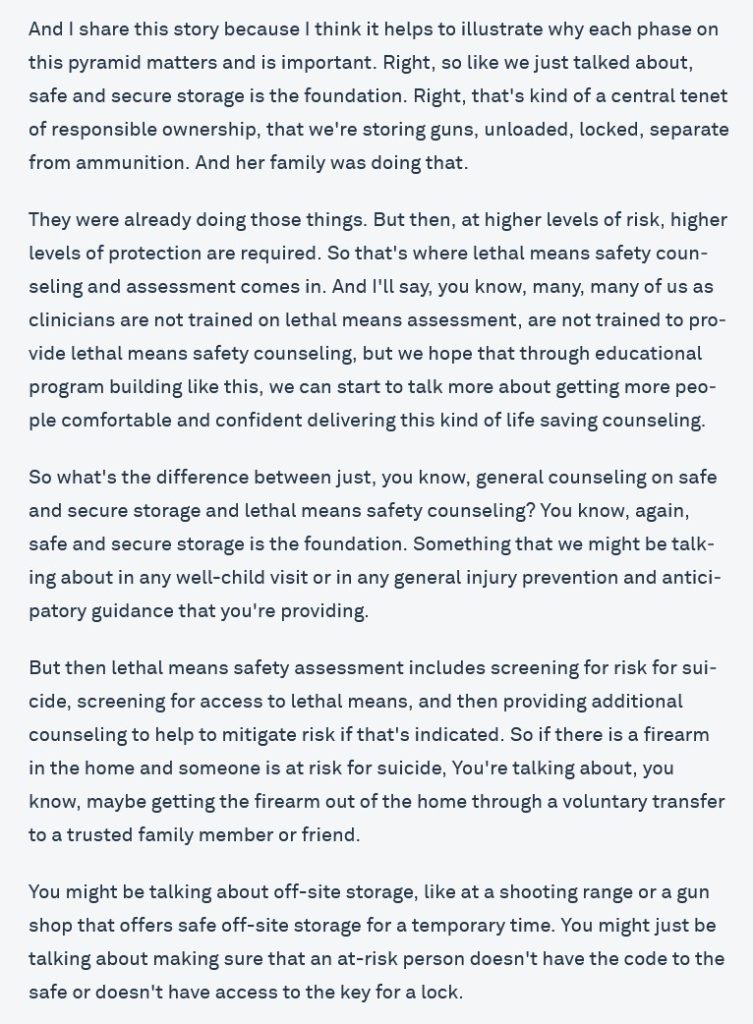
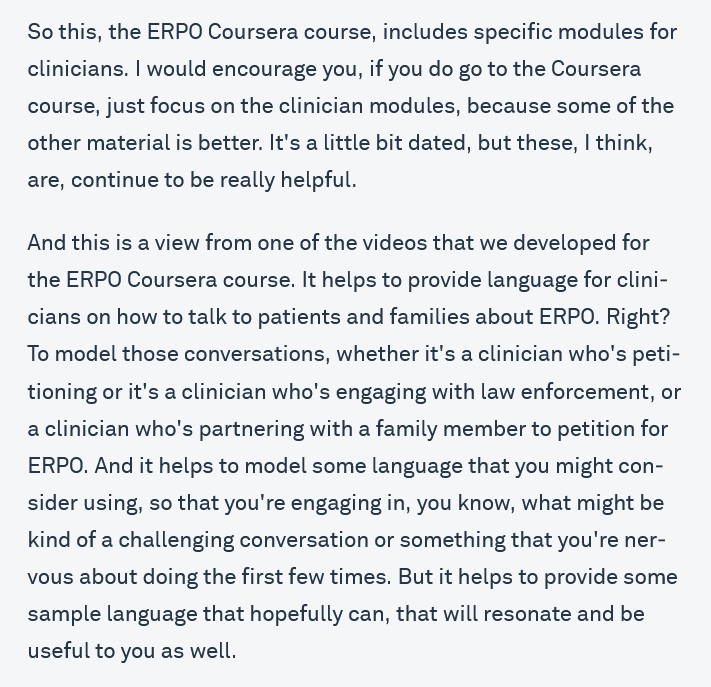
The last screenshot above (the second from the statement by Dr. Hoops) regards the use of ERPO (Extreme Risk Protection Orders) laws that multiple states have passed and implement. What appears to be going on in terms of the AMA is to encourage the discussion of ERPO with patients and/or their families, if the physician (the clinician) believes that the patient is at risk for harming himself/herself, or others.
It appears that the CME course content mentions nothing about the Second Amendment right to keep and bear arms.
Yours Truly now turns to a 2016 paper by Dr. Marian E. Betz, MD, et al. Dr. Betz is also one of the panel members for the AMA CME course “round table”, cited above. The paper is found here: https://www.acpjournals.org/doi/10.7326/M15-2905, “Yes, You Can: Physicians, Patients, and Firearms”, Marian E. Betz, et al., 17 May 2016. This paper covers several topics, including “parameters” for physicians to follow in speaking with patients regarding firearms ownership and “safe storage”; criteria for physicians to follow to “classify” whether or not a patient is “at risk” for harming themselves or others with firearms; various types of “safe storage” options for firearms; and, “strategies” for physicians to follow when speaking with patients about firearms. Two screenshots from the paper are below:
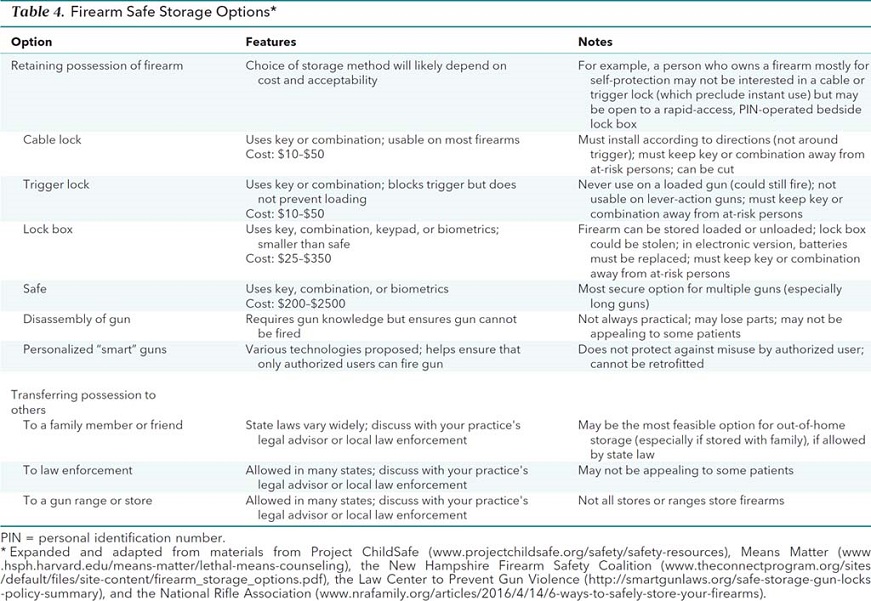
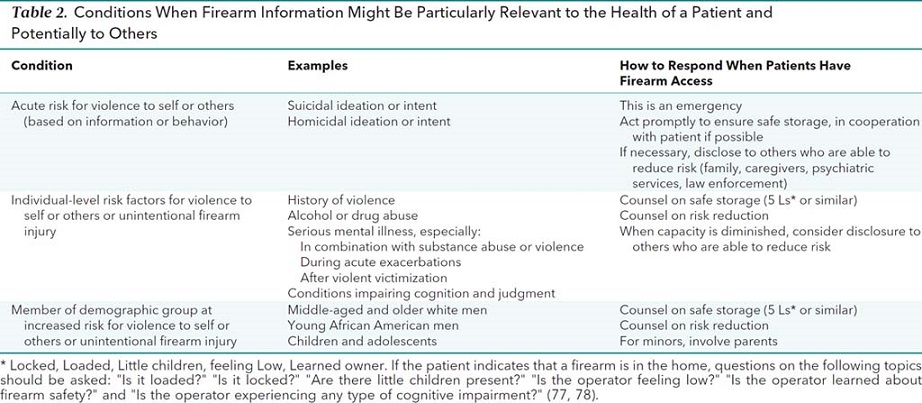
Dr. Betz, et al., also discussed the ways a physician can obtain information from a patient regarding firearms ownership; and, that physicians, under the Affordable Care Act, can disclose information regarding the patient’s possible risk of harming himself/herself or others to the authorities. Please the screenshots from the paper, below:
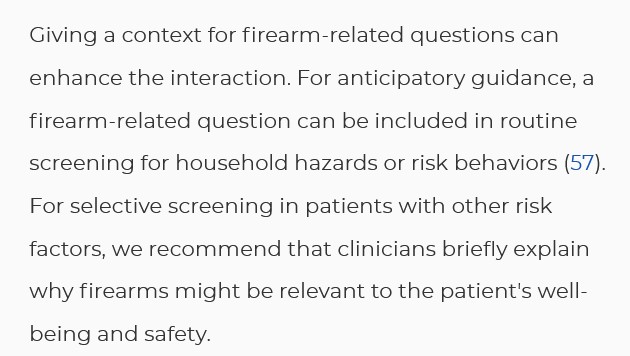

Yours Truly will make it clear that the Second Amendment is a protected right in the United States of America; that responsible firearms ownership and responsible firearms use are a given; that there may be certain circumstances in which firearms ownership and use may be restricted for the owner (and which restrictions must be lifted when the circumstances have been resolved); that firearms be kept away from criminals. However, it appears, in Yours Truly’s opinion, that the American Medical Association would prefer that firearms ownership and responsible use be, not under the aegis of the Second Amendment — but, rather, through the “approval”, “supervision”, and “discretion” of physicians.
Peace, Good Energy, Respect: PAVACA
